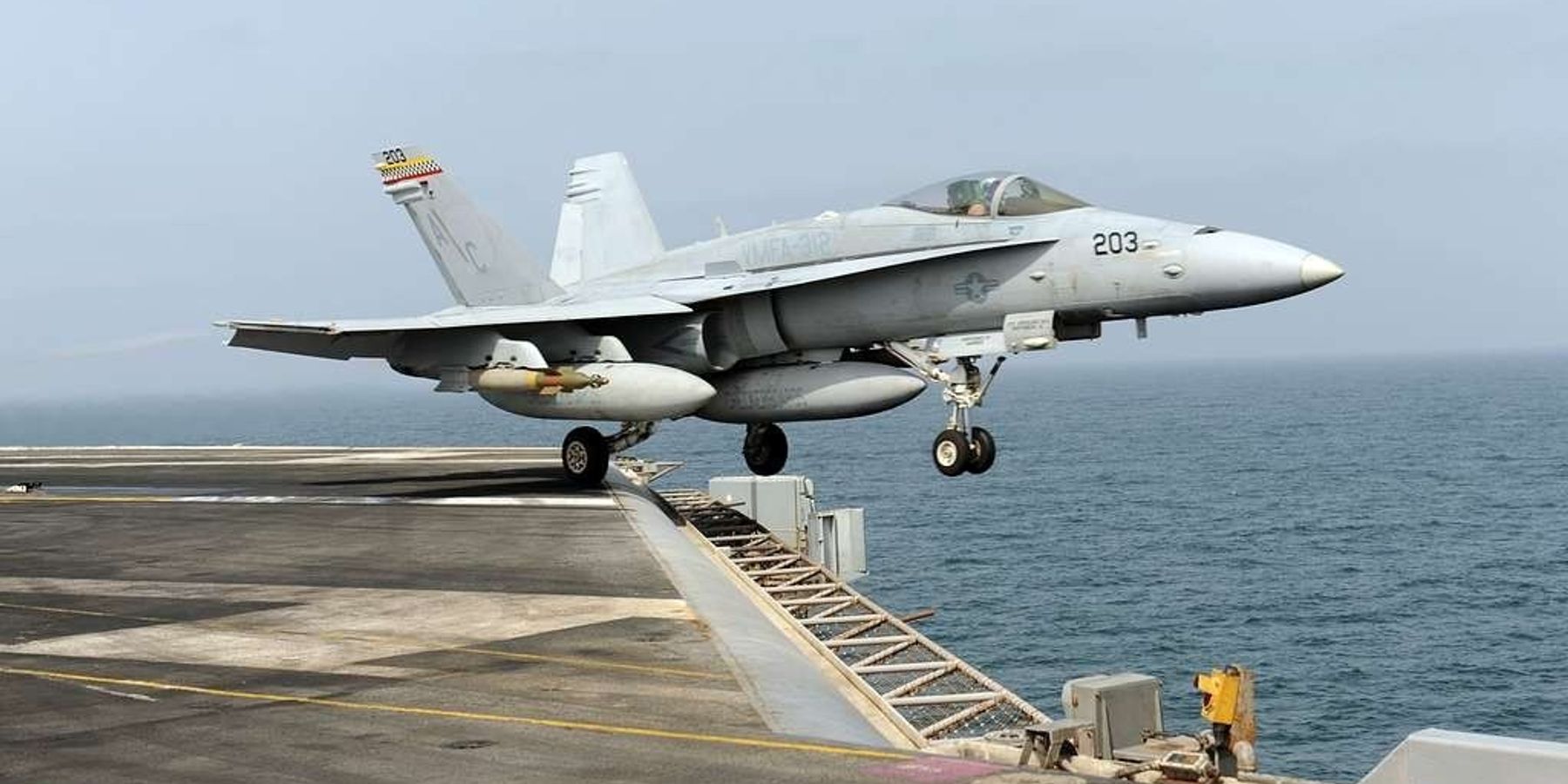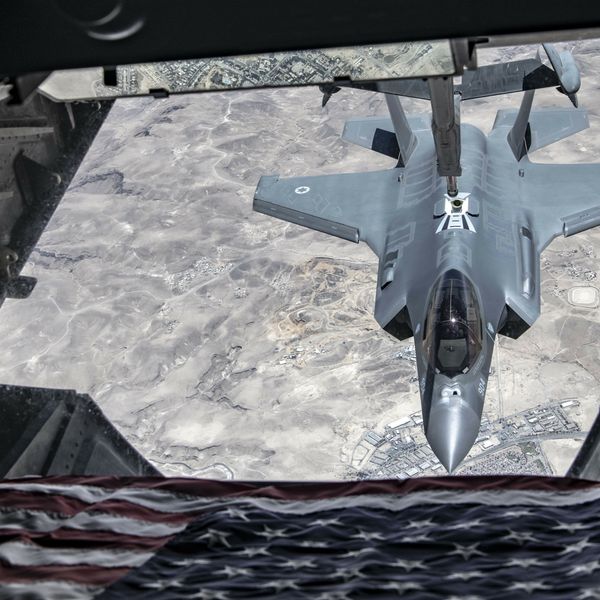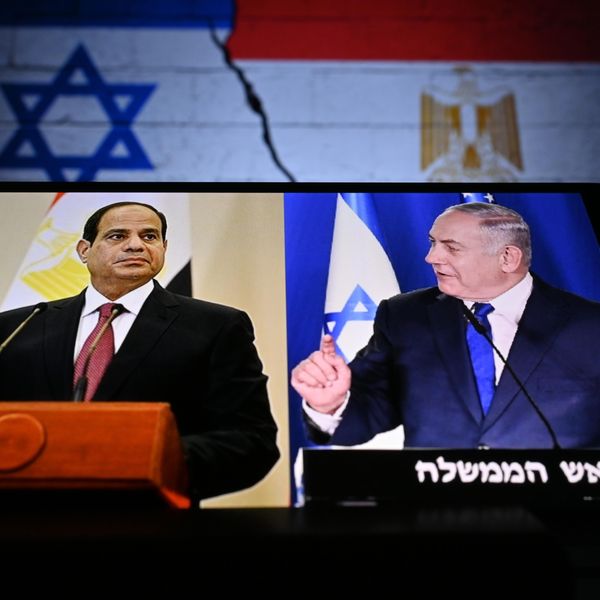Today the US Navy lost a F/A-18 Super Hornet fighter jet — worth at least $67 million — when it fell off the USS Harry S. Truman aircraft carrier as it took a hard turn to avoid Houthi fire.
The USS Truman is stationed in the Red Sea as part of the U.S.’ ongoing anti-Houthi campaign, also known as Operation Rough Rider.
“The F/A-18E was actively under tow in the hangar bay when the move crew lost control of the aircraft. The aircraft and tow tractor were lost overboard,” a statement from the Navy read. “Sailors towing the aircraft took immediate action to move clear of the aircraft before it fell overboard. An investigation is underway.”
The Navy emphasized Monday that the Truman Carrier Strike Group, which has been targeted repeatedly by the Houthis, “remain[s] fully mission capable.”
To date, the U.S. has spent about $3 billion in its recent anti-Houthi campaign since it began in mid-March, hitting over 800 targets in Yemen, and killing hundreds of civilians, in the process. And now, the accidental loss of a fighter jet instantaneously adds tens of millions to that total.
The billions the U.S. has spent in this campaign have resulted in questionable outcomes. CENTCOM says its efforts have degraded Houthi fighting capacities; yet CNN reporting from last month suggested the campaign has only had limited results against them. Earlier this month the New York Times reported that in closed briefings, “Pentagon officials have acknowledged that there has been only limited success in destroying the Houthis’ vast, largely underground arsenal of missiles, drones and launchers.”
Critically, the U.S. says its anti-Houthi campaign is about ensuring ships can go through the Red Sea without getting attacked by them. But they’re hitting at a group with other objectives, namely, pressuring U.S. ally Israel to stop its onslaught against the Gaza strip. All the while, prospects of renewed civil war in Yemen — which the U.S. has said it could be open to participating in — have only grown.
















